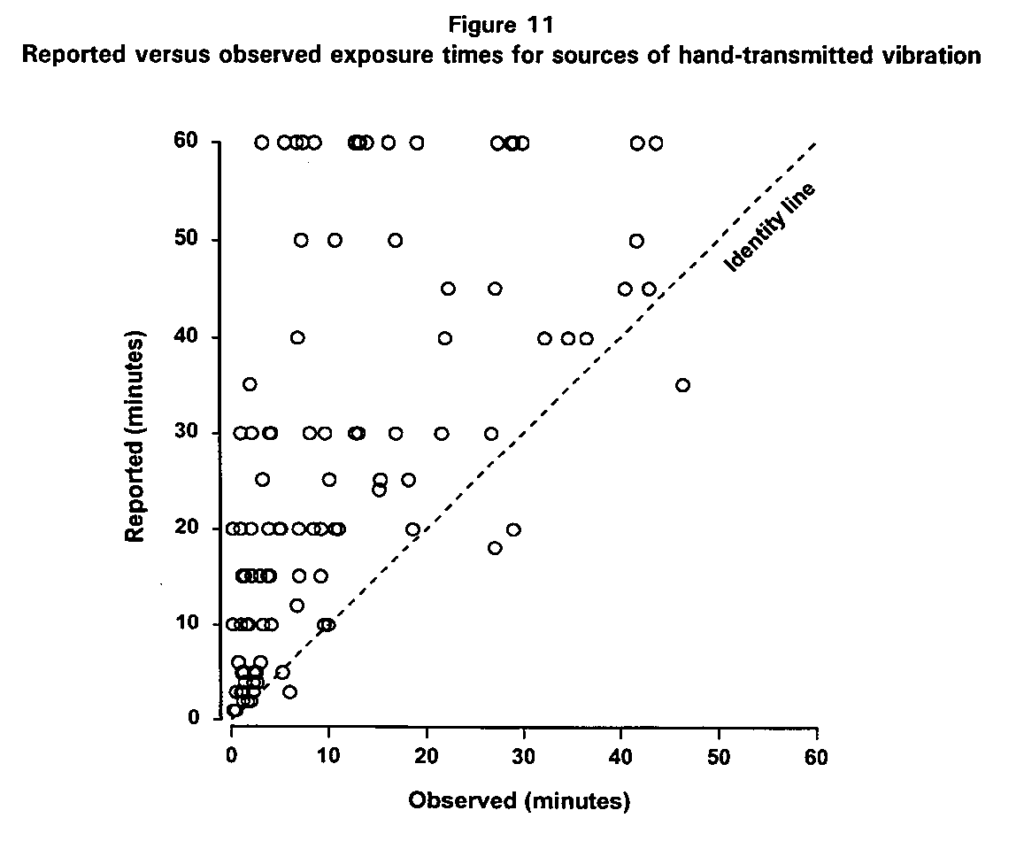Accurate assessment of exposure is vital in industrial disease claims. In vibration claims, accurate assessment of ‘Anger Time’ (or ‘Trigger Time’) is especially important.
Tool use can often be described as being ‘all day’ but clearly a more accurate assessment is required. Time spent travelling, on breaks, getting materials, or setting up machinery are easily removed from tool use calculations.
However, the next step is to establish ‘Anger Time’ – the time that a claimant was actually exposed to vibration. How long was the machine (or machines) in question actually transmitting vibration to the claimant?
For the purposes of this article, I shall consider hand-arm vibration only. However, a similar exercise to the one described below was conducted in relation to whole body vibration.
Engineering Experts
Expert engineers are usually well-versed in assessing Anger Time. However, it is worth practitioners considering what the experts are actually describing in their reports when they seek to assess Anger Time.
In their reports, expert engineers frequently cite a 1991 HSE paper regarding vibration exposure in quarries, as well as research undertaken by Brammer and Taylor.
However, the document which is most frequently cited is “Hand- transmitted vibration: Occupational Exposures and their Health Effects in Great Britain”. This is the Health and Safety Executive, Contract Research Report (CRR) 232/1999.
CRR 232/99 – the ‘Workplace Visits’ Study
As part of this report, a study was undertaken at 30 different workplaces.
The premises included: motor vehicle and mattress assembly plants; a metalworking shop in a shipbuilder’s yard; farming and horticultural estates; retail warehouses; a haulage depot; a joiners shop; a Local Authority Department; a University Department; and depots involving the maintenance of aircraft and vehicles.
116 workers who used tools which exposed them to hand-arm vibration were included in the study. The workers were asked to undertake their normal roles over a period of an hour. During this period a researcher with a stopwatch measured their actual use (the measured/ observed Anger Time) of the vibratory equipment.
After the hour was complete, workers were asked to estimate their own actual usage of the vibratory tools (the estimated/ reported Anger Time). The researchers then compared the workers’ own estimated Anger Time with the measured Anger Time as recorded by the researchers.
The Results

The diagram shows measured/ observed Anger Time across the horizontal axis. The estimated/ reported Anger Time is shown up the vertical axis. If an individual had estimated his/ her use correctly, then the mark would lie on the 45 degree ‘Identity Line’.
However, as can be seen from the diagram, there was a heavy tendency to over-estimate Anger Time. For example, the estimated time (vertical axis) might be 30 minutes whereas the measured time (horizontal axis) might only be 15 minutes.
As is natural, some estimates were closer to the mark than others. Indeed there were some who under-estimated the Anger Time.
A copy of the whole of Hand-transmitted vibration: Occupational Exposures and their Health Effects in Great Britain, Contract Research Report, 232/1999 can be found within the Vibration Library
Reasons for the inaccurate Estimates
The research showed that it was likely that people would round up or round down to the nearest 5 or 10 minutes. It might be unlikely for someone to estimate his/ her Anger Time as, say, 13.4 minutes.
It is also the case that the estimated times were closer to measured times as the amount of exposure increased. Those measured at 40 minutes, say, were only slightly higher in their estimates.
Common-sense also dictates that if a machine is frequently turned on and off, then estimates of Anger Time are more difficult. Such estimates are, therefore, less accurate.
Tables towards the back of CRR 232/1999 show that, for example, operators of hand guided mowers and floor polishers gave more accurate estimates. These are more likely to be used for longer periods, so with reduced errors.
Conversely, operators of impact screwdrivers, which are used for very short, though intense, periods gave significant over-reporting in their estimates.
Points to Consider
Commonly engineering experts will reduce a claimant’s estimate of Anger Time by 50%, based upon the study and the other documents.
It is sometimes thought that when the expert makes that 50% reduction, the expert is doing this because he/ she assumes that a claimant has not considered the concept of Anger Time at all. However, as can be seen from the study, this is not correct. The 50% reduction is made after a claimant has made an estimate of his/ her Anger Time.
It should also be remembered that the estimated Anger Time in the study was taken from workers immediately after the tool use. In Industrial Disease claims, the estimates are likely to be made some time after such tool use. Accuracy is unlikely to increase with the passage of time.
Of course, some claimants will be better at estimating time than others. This is an assessment to be made of individuals by practitioners (and ultimately by a Judge). Likewise, some sources of vibration are easier to estimate, particularly the ones which are used for longer periods.
As a checklist, though, practitioners might wish to consider:
- An initial assessment of the Anger Time for a particular vibratory tool will be made by a claimant.
- Consideration of the above factors will determine whether this is likely to be an over-estimation. If so, then to what degree.
- Machinery used for short bursts or short periods of use is more likely to lead to inaccurate estimates. Machinery used for longer periods is more likely to result in more accurate estimates.
- It does, of course, depend on the quality of any one individual claimant’s own evidence.
Sign Up for email alerts when new Updates are posted:
Please contact me for any training requests in respect of vibration related matters.
Parklane Plowden Chambers websites: Personal Page, Contact my clerks